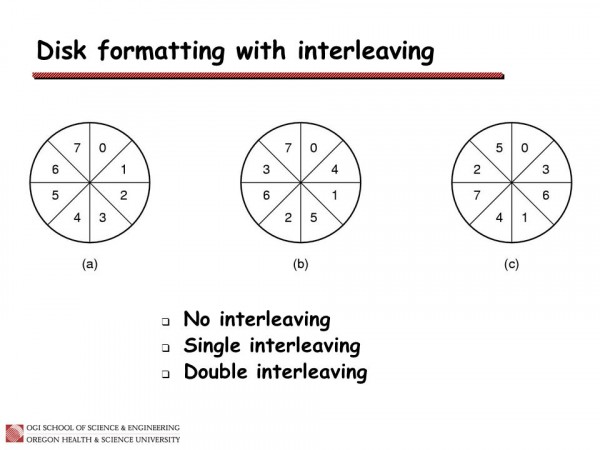
see figure 1 . it is non interleaving so when we have to read the data of single track , we can read the all track in single rotation
see figure 2 it is single interleaving so when we have to read the data of single track, we can read all data of single track in 2 round
because
in single interleaved disk the sectors are not arranged sequentially like 0,1,2,3...7. They are separated by 1 interleaved sectors.
means
when we read 0 sector after we have to pass through 4 to read sector 1 and to read sector 2 we have to pass through 5
so
to read total data (one track data) it will take 2 rotation
see figure 3 it is double interleaving so when we have to read the data of single track, we can read all data of single track in 2.75 round
hint watch the 7 in the figure means when we read all the 8 sector we have to cover 2 full rotation + 3/4 rotation
now come to question
300 rpm => 300 rotations --> 60 secs
1 rotation --> 0.2 secs
and time for arm for correct it at position 0 sector is =1/2 of full rotation =0.1 s
.so total time to read all data =time to set arm + time to read data
= 0.1 s+2.75 * 0.2 s
=0.65 second
=650 ms